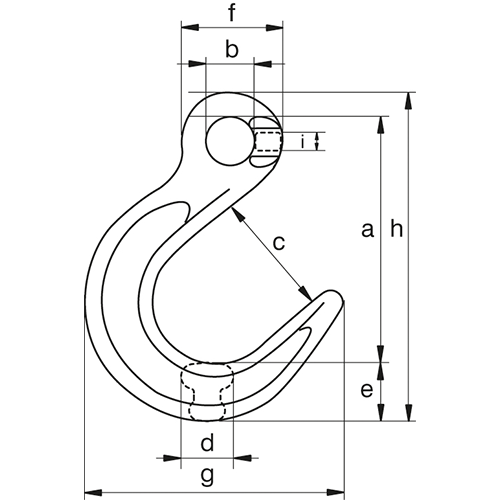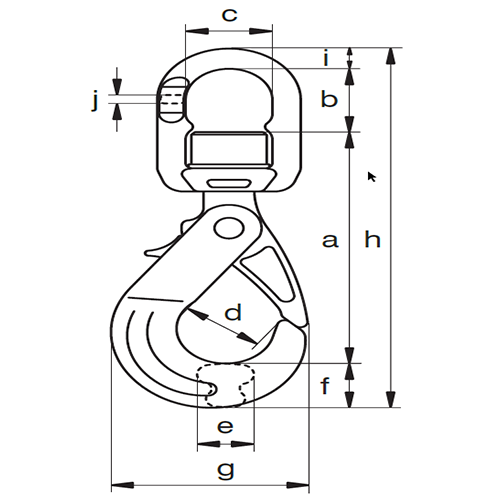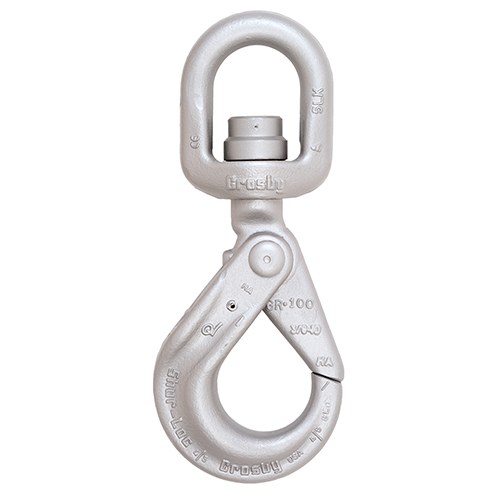Eye Hook
Description:
All Crosby 320 Eye Hoist Hooks incorporate the following features:
- The most complete line of Eye hoist hooks.
- Available in carbon steel and alloy steel.
- Designed with a 5:1 Design Factor for (Carbon Steel); 4.5:1 Design Factor for 30t – 60t (Alloy Steel).
- Eye hooks are load rated.
- Proper design, careful forging and precision controlled quenched and tempering give maximum strength without excessive weight and bulk.
- Every Crosby Eye Hook has a pre-drilled cam which can be equipped with a latch. Even years after purchase of the original hook, latch assemblies can be added. (See pages 123 – 125)
- Chemical analysis and tensile tests performed on each PIC to verify chemistry and mechanical properties.
- Type Approval certification in accordance with ABS 2007 Steel Vessel Rules 1-11-17.7 and ABS Guide for Certification on Cranes available. Certificates available when requested at time of order and may include additional charges.
- Hoist hooks incorporate two types of strategically placed markings forged into the product which address two (2)
QUIC-CHECK® features:
- Deformation Indicators and Angle Indicators (see following page for detailed definition).
Product information:
The following additional features have been incorporated in the new Crosby S-320N Eye Hoist Hooks. (Sizes 3/4 metric ton Carbon through 22 metric ton Alloy.)
- Metric Rated at 5:1 Design Factor for (Carbon Steel); 5:1 Design Factor for 1t – 22t (Alloy Steel).
- Can be proof tested to 2 times the Working Load Limit.
- Low profile hook tip.
- New integrated latch (S-4320) meets the world-class standard for lifting.
- Heavy duty stamped latch interlocks with the hook tip.
- High cycle, long life spring.
- When secured with proper cotter pin through the hole in the tip of hook, meets the intent of OSHA Rule 1926.1431(g) and 1926.1501(g) for personnel hoisting.
- Hoist hooks incorporate markings forged into the product which address two (2) QUIC-CHECK® features.
- Deformation Indicators — Two strategically placed marks, one just below the shank or eye and the other on the hook tip, which allows for a QUIC-CHECK® measurement to determine if the throat opening has changed, thus indicating abuse or overload. To check, use a measuring device (i.e. tape measure) to measure the distance between the marks. The marks should align to either an inch or half-inch increment on the measuring device. If the measurement does not meet this criteria, the hook should be inspected further for possible damage.
- Angle Indicators — Indicates the maximum included angle which is allowed between two (2) sling legs in the hook. These indicators also provide the opportunity to approximate other included angles between two sling leg





















